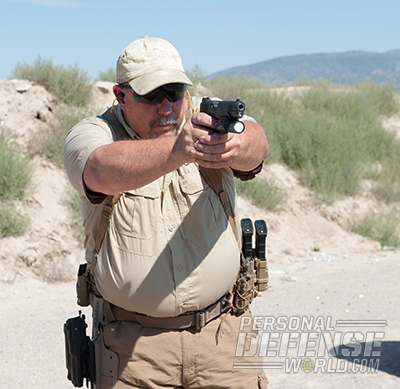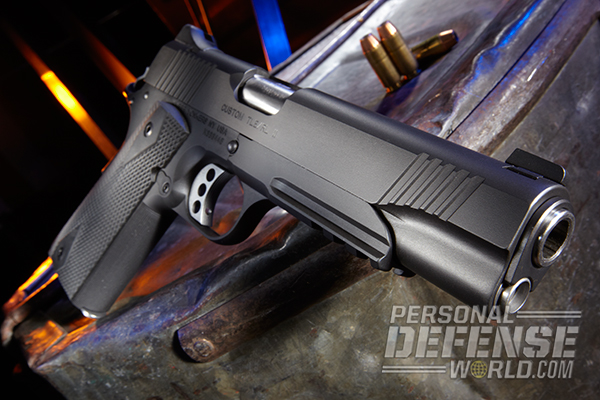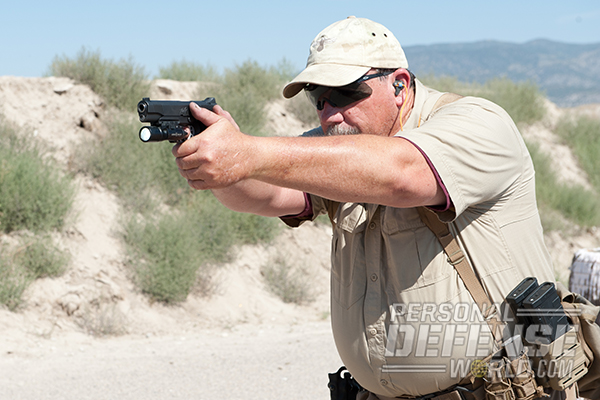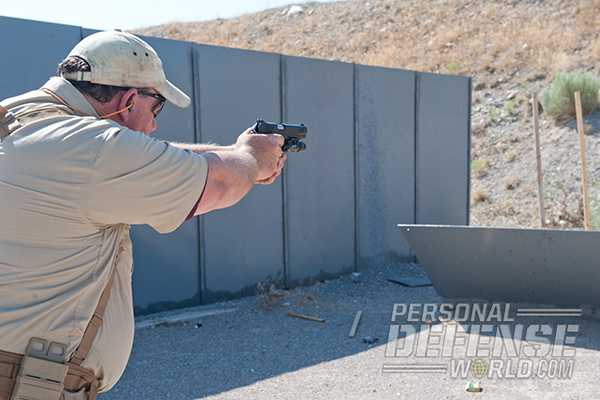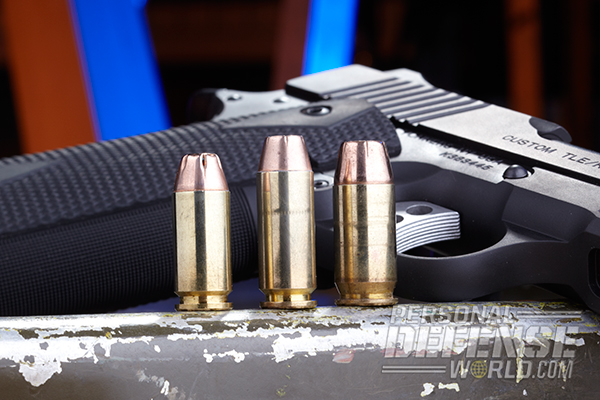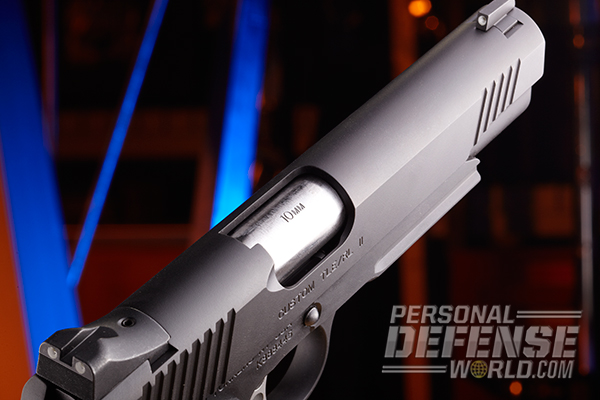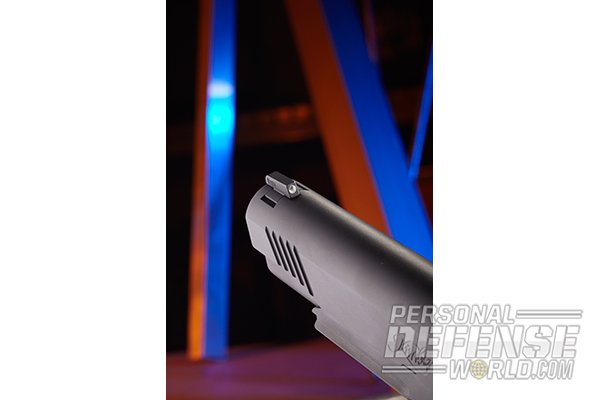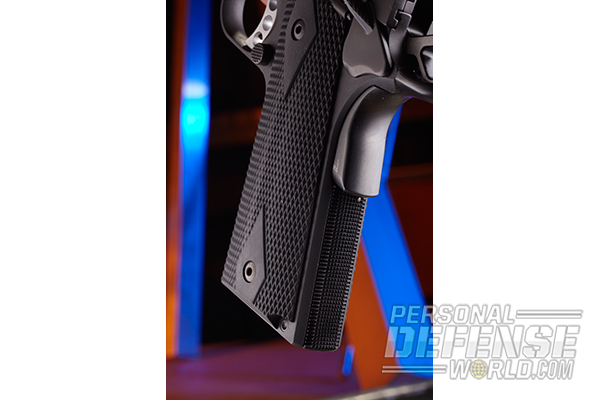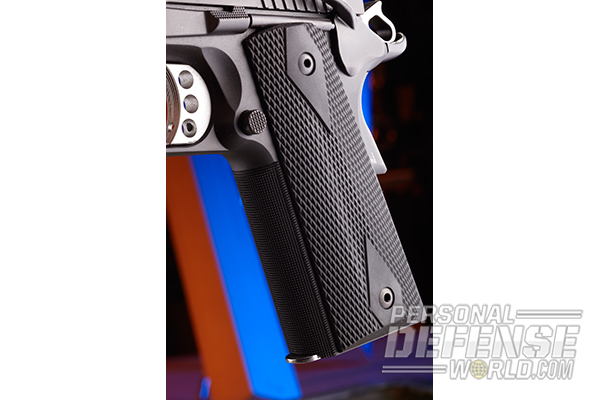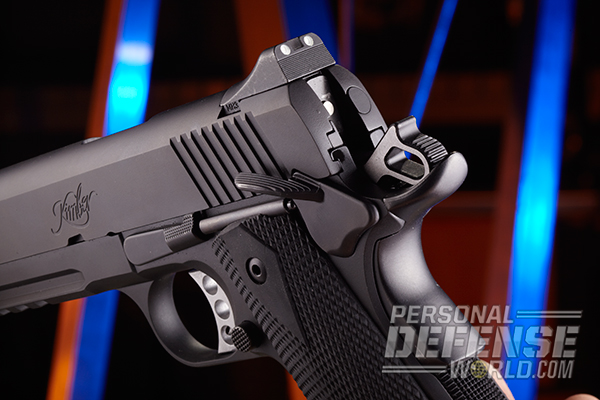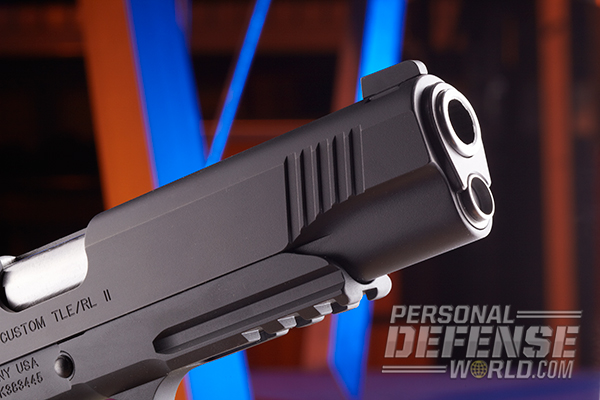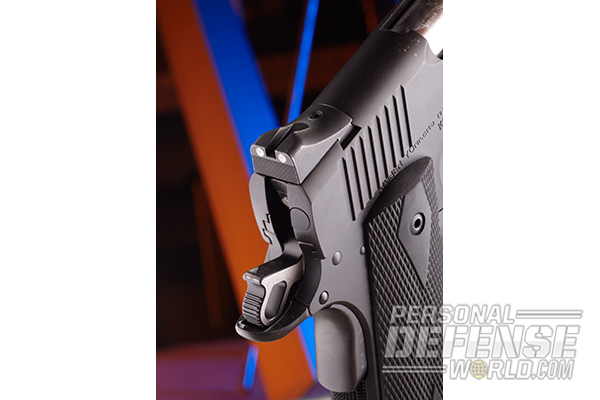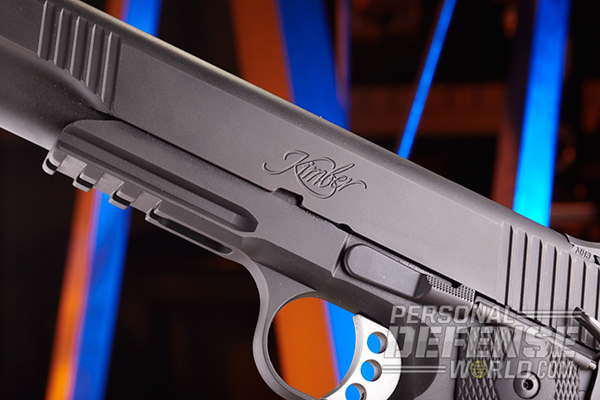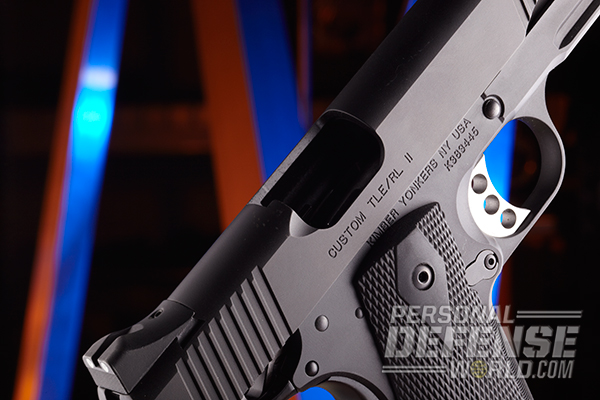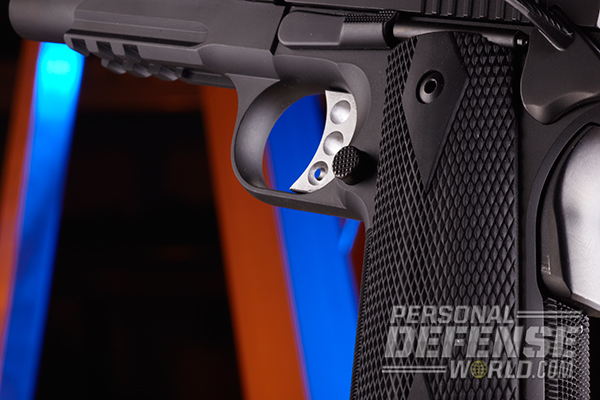The 1911 pistol has long been a steady favorite of tactical operators. But, in recent years, it’s also surged in popularity among civilians. Production pistols are better made now than ever before, with features to meet most any need. Improvements in machining and manufacture has made them more reliable and accurate. While well-built 1911 pistols are not cheap, they are more affordable today than in years past. My first 1911 pistol, purchased over 20 years ago, cost close to $1,500 after minimal upgrades. Today that gets you an excellent factory 1911 with features not even available in the 1990s.
As the use of weapon-mounted lights continues to grow, 1911 manufacturers have worked hard to meet demand. Mounting a light to a home-defense pistol is an excellent idea, allowing you to clearly identify the threat. For those carrying on duty or in a tactical rig, they are almost a necessity. Tactical lights are smaller, more powerful and more rugged, making them well suited to use in any environment. Once a rarity, duty pistols with lights are now almost the norm.
One of the most popular 1911 pistols designed to meet the need for light and laser attachment is the Kimber TLE/RL II. The Custom TLE (Tactical Law Enforcement) was designed with input from the Los Angeles Police Department’s SWAT team, and they carry it today in .45 ACP. It is simple, rugged and includes a rail for the addition of a tactical light. Although designed by a SWAT team, it has gained traction among civilian 1911 shooters. With a retail price at under $1,200 it is one of the most affordable tactical 1911 pistols on the market, putting it within reach of many potential users. Once only available in .45 ACP, the 10mm option adds an entirely new dimension to this pistol.
Advertisement — Continue Reading Below
For more information on the TLE/RL II and other products from Kimber, please visit KimberAmerica.com.
Much like the 1911 pistol, the 10mm cartridge is experiencing a resurgence. It has a number of advantages and continues to stick around, slowly winning over new shooters. It remains my favorite combat pistol cartridge—two of my most well-used carry pistols are chambered in 10mm. Loaded properly, it penetrates deeply, yet it expands quickly and efficiently in soft tissue. Recoil is manageable in most platforms while maintaining excellent reliability. Accuracy with the 10mm can be astounding. It remains one of the flattest shooting pistol cartridges you can carry, providing for usable accuracy in a pistol out to 100 yards.
Advertisement — Continue Reading Below
Gun Details
Kimber has been one of the industry’s most consistent supporters of the 10mm cartridge. When interest waned with some gun makers, you could still get a Kimber Eclipse in 10mm, one of which served me well for years. Other pistols were available, but none so well equipped at a reasonable price. The only thing missing for me was a rail, and the TLE/RL II has taken care of that.
This RL II starts with a steel frame with a high cut front strap and 30-lpi checkering. The trigger is an aluminum, match-grade, standard-length trigger set to 4.5 pounds. As a Custom II pistol, it uses a firing-pin safety. Activated using the grip safety, it meets many requirements set forth by police agencies and even a few states. Among some 1911 users, this always lights a fire, but for me it’s never been an issue. I’ve owned at least half-a-dozen Kimbers with firing-pin safeties over the years, and none has ever failed. It does allow for a crisp trigger though, and most people never even notice that it’s there. Checkering is used on the mainspring housing, allowing for a solid grip. The mag well is beveled for positive magazine changes. A short rail is included to allow for tactical lights or other devices. An extended grip safety ensures a high grip, and black synthetic grips round out the lower receiver.
Advertisement — Continue Reading Below
A fully supported stainless steel, match-grade barrel is fitted to the steel slide. Cocking serrations are situated at the front and back. The full-length guide rod maintains solid accuracy, while the stainless steel bushing ensures reliability. Sighting is accomplished using Meprolight three-dot night sights with a no-snag rear. Two seven-round Kimber flush-fit magazines are provided and are shipped in a nice hard case.
“Accuracy with this caliber can be amazing, even out of factory pistols. This pistol was no exception …”
I tested the gun using my SureFire X300 with DG1 switch. Having used the light for years, it is one of the best pistol lights on the market. I’m still getting used to the DG1 switch, but it shows great promise. Allowing for the use of the light with a squeeze of the grip, it makes it simple and usable with either hand. While testing, I also wore my VTAC Battle Belt. The whole point of the rail is to attach a light or laser, and this setup nicely accommodates accessorized pistols. Finally, I used my JM Custom Kydex concealment holster, which is designed for railed pistols without the light.
Advertisement — Continue Reading Below
Range Time
If there is a weak point in the 10mm 1911 pistol, it is the magazines. Each pistol seems to favor different magazines. Those supplied with the Kimber TLE/RL II most closely resemble factory Colt Custom Delta Elite magazines. Holding eight rounds, they use a round follower. Over the years, they’ve proven themselves to be very reliable, as they were while testing the Kimber. Both the Kimber-supplied magazines and several of my Colt factory magazines worked flawlessly. Another fantastic magazine is Tripp Research’s 10mm magazine. Built from the ground up as a nine-round magazine, it is amongst the best built you can acquire—but they don’t work in every pistol. Mine use aluminum base pads, although plastic ones are standard. Like the Colt and Kimber mags, they worked great in the TLE/RL II with all of the ammunition tested. Still, a few other magazines experienced glitches, and with decades of time behind 10mm 1911 pistols, I recommend testing your pistol using your self-defense round with any magazine you intend to carry. Brand name and cost are not always relevant: Some pistols just won’t run with some magazines. In this case, the Kimber ran the supplied magazines (Colts and Tripps) flawlessly with every type of ammunition.
Accuracy with this caliber can be amazing, even out of factory pistols. This pistol was no exception, with its best group measuring 1.26 inches at 25 yards using the Underwood 180-grain Speer Bonded JHP. This was no random rest, just my wrists resting on a sandbag. Not sure a pistol gets any more accurate. Everything shot within 2 inches at 25 yards, with most in the 1.5-inch range.
Advertisement — Continue Reading Below
“Over the course of a very hot day, and a few hundred rounds, it never malfunctioned …”
One of the 10mm’s advantages is its flat shooting characteristics. Shooting at 50 yards, you need only hold a bit high and it still hits in the center. Using some HSM 180-grain Gold Dot, hits on a 6-inch round target at 50 yards were regular. Moving back to 100 yards using a small silhouette target yielded similar results. Just for kicks, two magazines were fired from off-hand on a typical IPSC silhouette steel target from 100 yards. With 12 out of 16 hits on the steel, it proved to be about as accurate as you can make a pistol at 100 yards while keeping it combat reliable.
Heating things up, this pistol never missed a beat. Most rapid fire was accomplished using Federal 180-grain FMJ or Blazer 200-grain TMJ ammunition. Pretty much as fast as the trigger could be pulled, the RL II just kept running. Over the course of a very hot day and a few hundred rounds, it never malfunctioned with the Tripp magazines. It was soft shooting, accurate, reliable and well balanced. The front sight was easy to pick up, although the rear will lose its dots if it sticks around.
Advertisement — Continue Reading Below
While most of the testing was done using my older SureFire X300, I used the TLR-1 HL as well. Both worked fine, but the HL requires a bit of work on the holster. The same is true with the newer SureFire X300 U, as the bezel is just a bit larger. Having seen years of hard use, my Safariland holster had already been altered to fit, but just be aware that if you move to these higher intensity lights that the difference is noticeable, especially at longer ranges.
Bottom Line
Given my affinity for the 10mm round, this was a fun test. With no railed 10mm 1911 in my safe, the test took on a different tone. If it worked, my plan was to keep it, and sure enough it worked great. It was reliable, accurate and comfortable to shoot. It fit nicely in both my concealed carry and duty holsters. While not feature rich, it has what most users will ever need. Aside from some small alterations, it will remain as tested when it finally lands in my safe. With a list price of $1,178, it is affordable by quality 1911 standards, and it worked right out of the box. Kimber has already had great success with the TLE/RL II line in .45 ACP, but adding the 10mm just opens it up to a larger market. If you are looking for a quality 1911 in 10mm with a rail, this should be one of the first you look at.
Advertisement — Continue Reading Below
FOR MORE INFORMATION
Kimber America
Advertisement — Continue Reading Below
888-243-4522
Tripp Research
432.837.9445
trippresearch.com
Underwood Ammunition
618-965-2109
underwoodammo.com
SPECIFICATIONS: KIMBER CUSTOM TLE/RL II
Caliber: 10mm
OA Length: 8.7 inches
Barrel: 5 inches
Weight: 39 ounces
Grips: Synthetic
Sights: Meprolight three-dot
Action: Semi-auto
Finish: Matte black
Capacity: 8+1
MSRP: $ 1,178
PERFORMANCE: KIMBER CUSTOM TLE/RL II
Load Velocity Accuracy
CorBon 135 Pow’R Ball 1,472 1.75
Hornady 165 FTX 1,222 1.62
HSM 180 Gold Dot 1,225 1.57
Underwood 180 Speer Bonded 1,247 1.26
Winchester 175 Silvertip 1,225 1.58
Bullet weight measured in grains, velocity in feet per second (fps) by chronograph and accuracy in inches for best five-shot groups at 25 yards.
